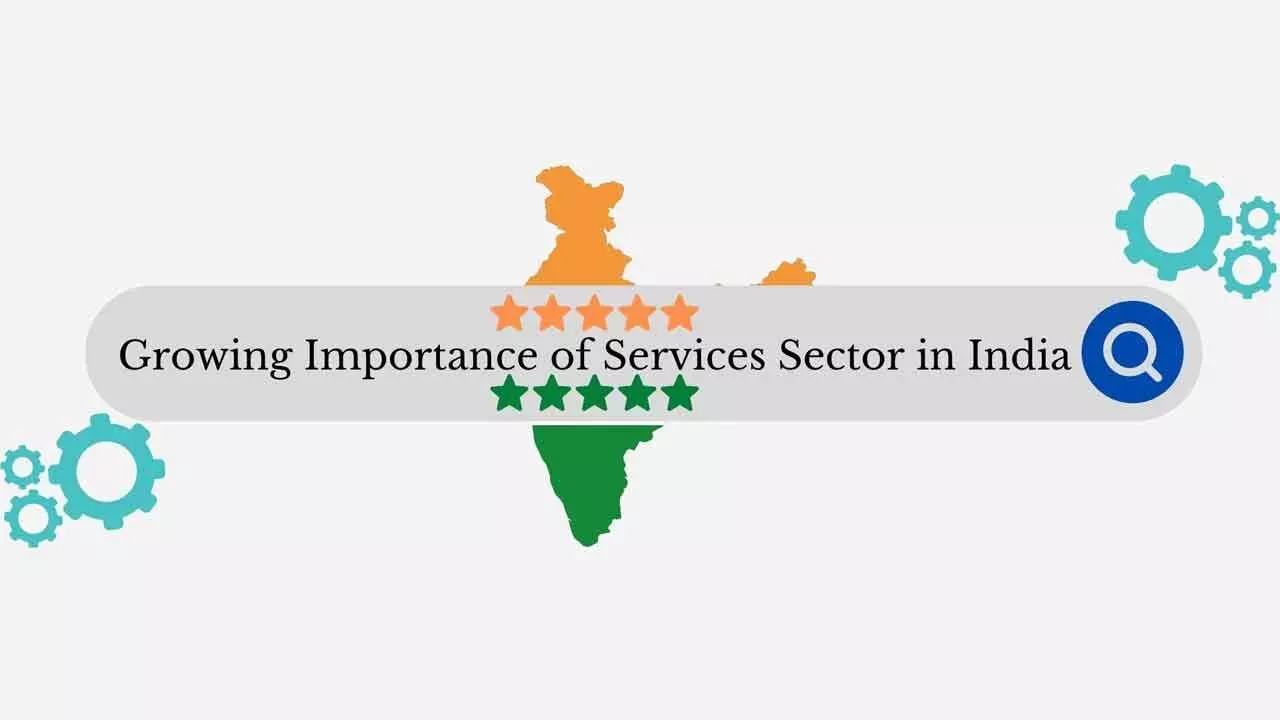Services And Not Manufacturing Should Be The Way Forward For India
Response time, transparency, accountability and excellence in public governance need substantial improvement in India
Services And Not Manufacturing Should Be The Way Forward For India

Finally, most of the value-added in a product often comes not from the manufacturing itself but in manufacturing-related services – the research and development, design, marketing, packaging and branding that surround it
In the quest to accelerate GDP growth sufficiently so as to provide jobs, end poverty, create wealth and enhance its global influence, India should tilt more towards developing its services industries rather than concentrating on manufacturing.
In the last four years, employment in manufacturing has grown at an average annual rate of about seven per cent. Last year, aggregate employment grew by eight per cent and manufacturing employment by 10 per cent. Rural women accounted for over 50 per cent of the jobs created in manufacturing in 2023. The significant increase in rural working-age women entering the labour market offers an excellent opportunity to raise India's GDP growth rate.
Service sector companies in the information technology (IT), banking and finance segments comprise nearly half of the new jobs created in FY23 by India Inc, while firms in manufacturing, infrastructure and consumption sectors saw moderate job creation, according to the latest study by Bank of Baroda.
Of the 8.12 million new jobs created by Indian firms, these three services sectors created 3.91 million (48.2 per cent) jobs during the year. The IT sector (2.06 million) led with the most jobs created, followed by banking (1.25 million) and finance (Rs. 575,000), the data showed.
Says N.R. Narayan Murthy, co-founder of Infosys, the success of manufacturing heavily depends on domestic contribution and government support. Unfortunately, the response time, transparency, accountability, and excellence in public governance in India need substantial improvement. He further added that reducing the interface between government and industry is essential for growth in manufacturing. Unless we improve our public governance system, becoming a manufacturing leader is very difficult
The government’s bias towards manufacturing is most evident in the array of subsidies it has put in place to support the sector, he said.
At the centre of this is a set of Production-Linked Incentives, which offer $28 billion of subsidies for firms in fourteen sectors as a way of encouraging increases in output.
The semiconductor industry has also been at the receiving end of the government largesse, for which an additional $10 billion has been made available.
Investment in physical infrastructure has been another signal of New Delhi’s seriousness in boosting manufacturing: central government capital expenditure has effectively doubled in the past 10 years, from 1.6 per cent of GDP in fiscal year 2015 to the present 3.2 per cent.
Says Raghuram Rajan “first, it will be difficult and unwise for India to compete meaningfully in manufacturing with more autocratic incumbents like China and Vietnam, who have fewer qualms about suppressing workers’ rights. Second, India’s protectionist instincts have left the country out of the trade and investment agreements that would integrate its manufacturing sector more robustly with other countries, and allow India to play a full role in global supply chains”.
India’s absence from Asia’s Regional Comprehensive Economic Partnership (RCEP) is an especially notable example, reflecting an overall frostiness towards trade deals.
Consistent with that protectionist bias, India’s average import tariff increased from 13.5 per cent in 2014 to 18 per cent in 2022. Arguably, the Production-Linked Incentives are an expensive way of compensating for the economy’s international isolation.
Finally, most of the value-added in a product often comes not from the manufacturing itself but in manufacturing-related services – the research and development, design, marketing, packaging and branding that surround it. That’s one reason why Apple is worth many times more than Foxconn, its manufacturing contractor.
Indian manufacturing hasn’t performed terribly well during the NDA government’s first two terms in office.
Inflows of foreign direct investment (FDI) have fallen in recent years. Manufacturing value-added as a share of the total economy was actually slightly lower last year, at 17 per cent, than when Narendra Modi first took office as Prime Minister in 2014.
In the past 10 years, China’s share of global manufacturing has risen from 25 per cent to over 30 per cent, while India’s remains stuck below three per cent.
These days India is attracting gross inflows of FDI of less than $30 billion annually, a notable decline from the $50 billion-plus that it was able to attract on average between 2019 and 2022.
In the light of these, there are laudable arguments in favour of paying more attention to the services sector, which can easily take advantage of the country’s cultural appeal and its command of the English language.
However, for any progress in land and labour vis-à-vis manufacturing, there is a need for land reforms because of the difficulty in getting land approved for non-agricultural use, and because of the unreliable land ownership records.
The factors that have held Indian manufacturing back so far might be difficult to overcome.

